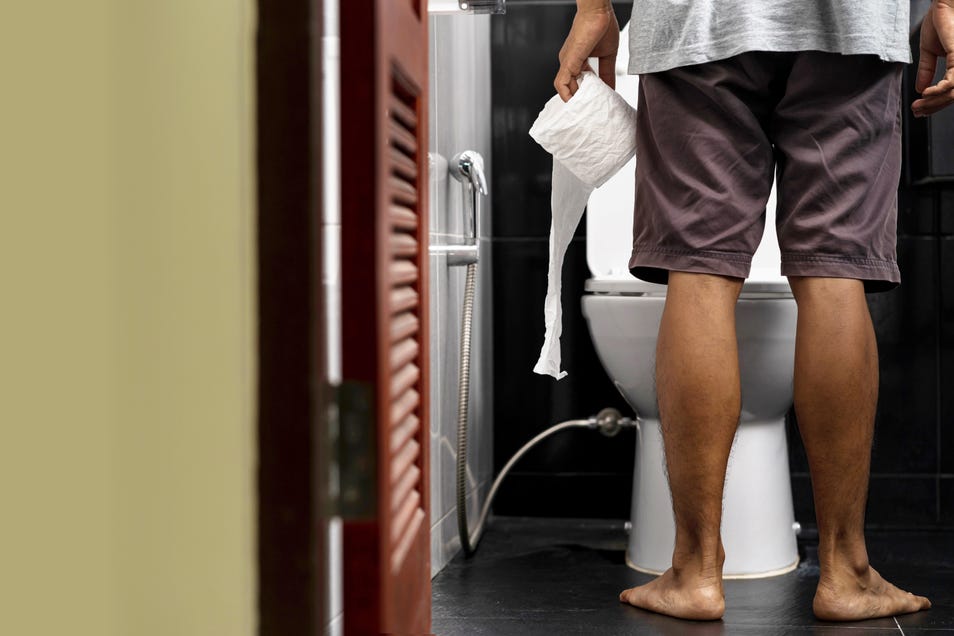How to Clean Public Toilet Seat Before Using It

Toilet seat, even if visibly clean, can harbor germs and microbes. The dampness and dust can make this problem worse. Taking care of hygiene before and after interacting with the toilet seat can help you reduce the risk of contracting and spreading germs.
The surface underneath the toilet seat can be lurking with pathogens that you can’t see. If the surface is not washed properly, the pee droplets can cause the yellow stains on your toilet seat, and an undesirable smell.
If you want to remove stains, germs, and unwanted smells, you will need products specifically designed for this purpose.
Read here to find out how to clean and sanitize toilet seat stains.
How to clean toilet seat stains
It’s important to keep your entire bathroom sparkly clean, but the area that requires a little more attention is your toilet seat.
Since the contaminated water from flushing and urine droplets can splash onto the seat, you will need a product that has the qualities of a disinfectant and a cleaner combined to deal with this issue.
You must use a product such as Harpic toilet cleaner as it is gentle, removes all the dirty stains, and makes your toilet germ-free while leaving a pleasant fragrance.
How can you remove urine stains from a toilet seat?
When cleaning the toilet seat, ensure you are not just wiping the top of the lid. It would help if you cleaned underneath the lid and crevices, too, as you can find many germs and bacteria in these hard-to-reach areas.
If you want to remove the tough urine stains, your best bet is Harpic toilet bowl cleaner, as its thick liquid formula and dynamic cleaning agents kill 99.99% germs, making your toilet germ-free, and its pleasant smell adds freshness to the environment.
How to sanitize toilet seat
A neat and clean bathroom is all we want.
Clean the toilet seat using Harpic bathroom cleaner by spraying a small amount of solution on the area to be cleaned but the spritzing should be enough to wet the area.
Leave it on for 10 minutes approx.
gently wipe it off using a sponge or wipes.
Rinse the toilet seat afterward.
After cleaning the toilet, the next step of a germ-free toilet is to sanitize it. The introduction of Harpic’s cistern flushmatic toilet blocks has simplified the procedure. You only need to drop the tablet into the tank, and it will do the rest.
How does it work?
Its foaming helps clean and sanitize the toilet bowl whenever you flush it. It offers a continuous cleaning process.
How to disinfect toilet seat
You can disinfect your toilet seat by using Harpic power plus original for the best results.
First clean the surface properly with a microfiber cloth.
Spritz the Harpic power plus original on the surface and let it sit for 10 minutes.
Use a scrubber if you are dealing with tough stains.
Wash off the solution with a gush of water.
Let it dry.
If you want to keep the bowl clean then use the Harpic toilet block. With every flush, it releases a powerful portion of detergent. It helps to distribute the detergent across the toilet bowl, providing a hygienic and deodorized environment.
It is very important to clean your toilet every day because it hosts many viruses and bacteria that can become a source of illness for you and your family. You can effortlessly keep it disinfected and cleaned using the right cleaner and appropriate tactics.
FAQs
1. Does sanitizer remove toilet seat bacteria?
Yes, a good sanitizer can help you remove toilet seat bacteria but it will not be entirely effective. The sureshot way to do this is to use a toilet cleaner.
2. How do you disinfect a plastic toilet seat?
You can disinfect a plastic toilet seat by using Harpic toilet cleaner or by mixing a gentle soap with water.
3. Which is the best toilet seat sanitizer?
The best toilet seat sanitizer is the Harpic toilet bowl cleaner, as it fulfills all the requirements of a neat and clean toilet.
.png?width=70&height=88&format=png&quality=50)